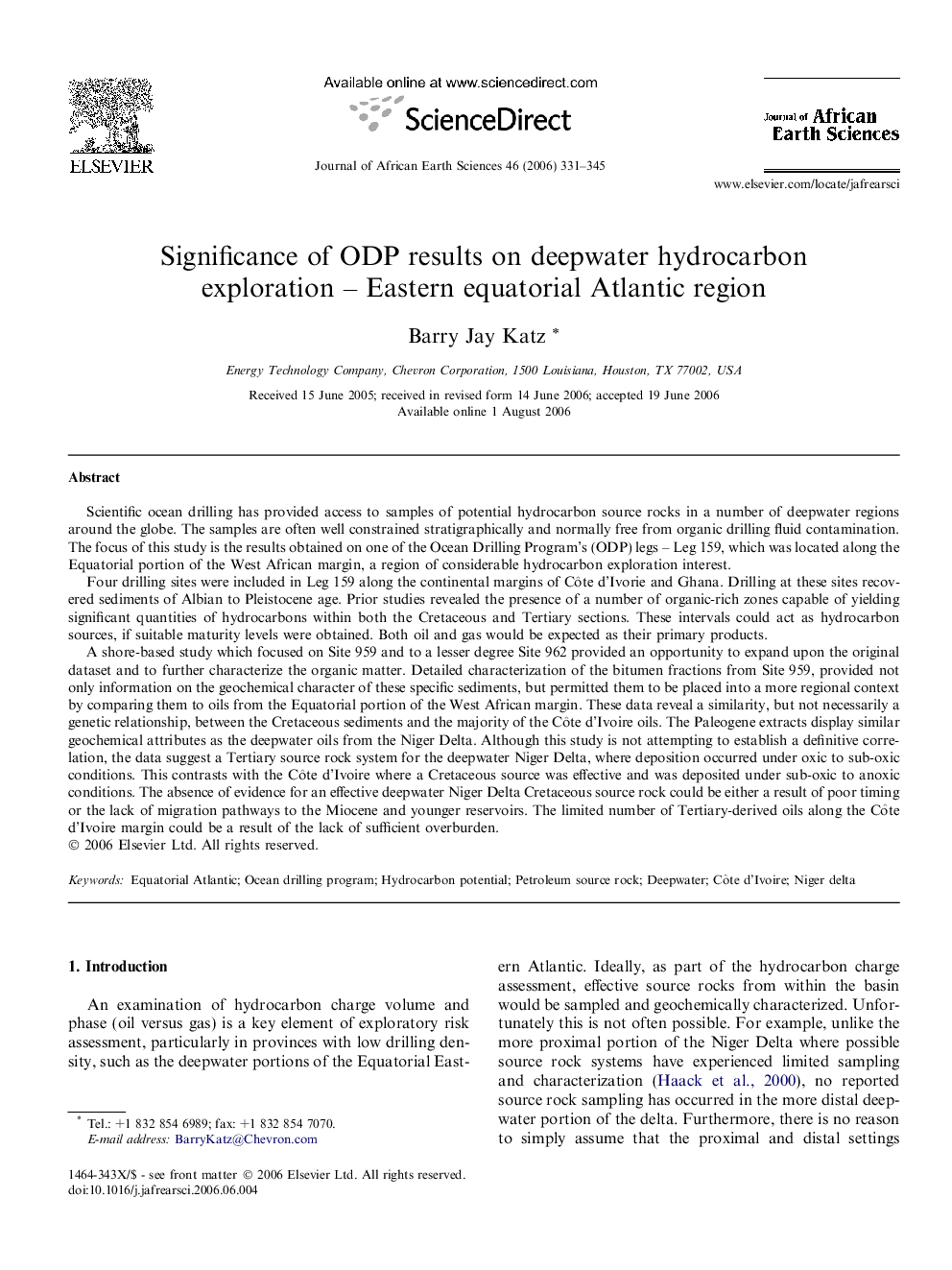| Article ID | Journal | Published Year | Pages | File Type |
|---|---|---|---|---|
| 4729461 | Journal of African Earth Sciences | 2006 | 15 Pages |
Scientific ocean drilling has provided access to samples of potential hydrocarbon source rocks in a number of deepwater regions around the globe. The samples are often well constrained stratigraphically and normally free from organic drilling fluid contamination. The focus of this study is the results obtained on one of the Ocean Drilling Program’s (ODP) legs – Leg 159, which was located along the Equatorial portion of the West African margin, a region of considerable hydrocarbon exploration interest.Four drilling sites were included in Leg 159 along the continental margins of Côte d’Ivorie and Ghana. Drilling at these sites recovered sediments of Albian to Pleistocene age. Prior studies revealed the presence of a number of organic-rich zones capable of yielding significant quantities of hydrocarbons within both the Cretaceous and Tertiary sections. These intervals could act as hydrocarbon sources, if suitable maturity levels were obtained. Both oil and gas would be expected as their primary products.A shore-based study which focused on Site 959 and to a lesser degree Site 962 provided an opportunity to expand upon the original dataset and to further characterize the organic matter. Detailed characterization of the bitumen fractions from Site 959, provided not only information on the geochemical character of these specific sediments, but permitted them to be placed into a more regional context by comparing them to oils from the Equatorial portion of the West African margin. These data reveal a similarity, but not necessarily a genetic relationship, between the Cretaceous sediments and the majority of the Côte d’Ivoire oils. The Paleogene extracts display similar geochemical attributes as the deepwater oils from the Niger Delta. Although this study is not attempting to establish a definitive correlation, the data suggest a Tertiary source rock system for the deepwater Niger Delta, where deposition occurred under oxic to sub-oxic conditions. This contrasts with the Côte d’Ivoire where a Cretaceous source was effective and was deposited under sub-oxic to anoxic conditions. The absence of evidence for an effective deepwater Niger Delta Cretaceous source rock could be either a result of poor timing or the lack of migration pathways to the Miocene and younger reservoirs. The limited number of Tertiary-derived oils along the Côte d’Ivoire margin could be a result of the lack of sufficient overburden.
